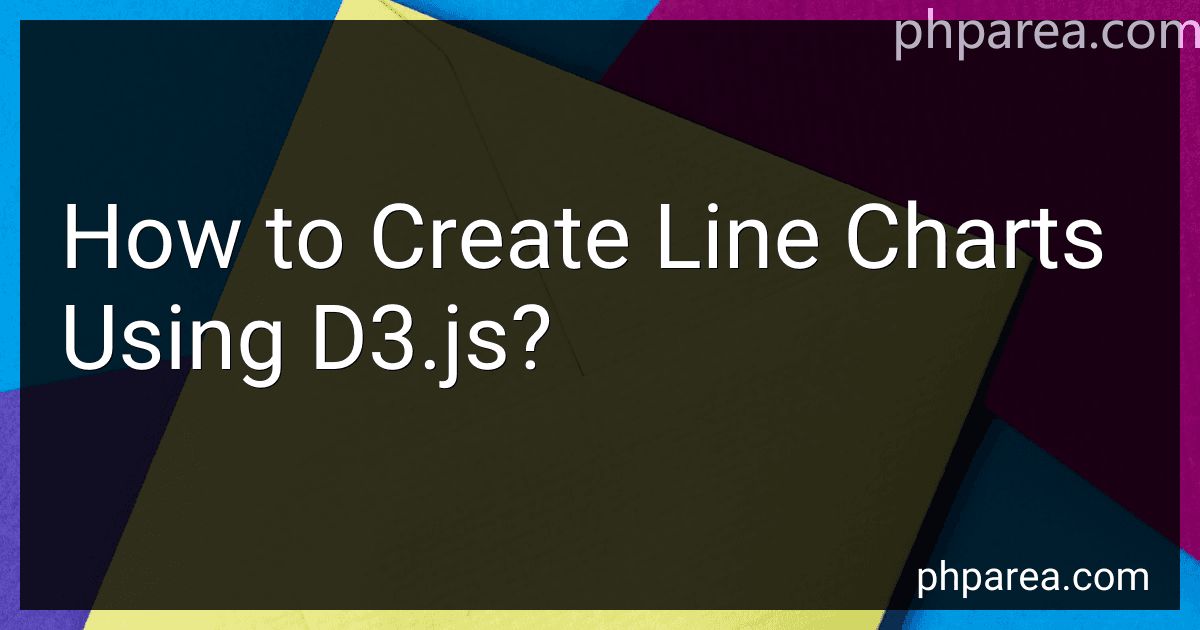Posts (page 84)
-
 7 min readManaging dependencies in Ember.js is crucial for maintaining modular and scalable code. Ember.js provides built-in tools and conventions to help handle dependencies effectively.One common way to manage dependencies in Ember.js is through the use of the Ember CLI (Command Line Interface). The Ember CLI provides a standardized project structure, including directories for models, routes, components, and more.
7 min readManaging dependencies in Ember.js is crucial for maintaining modular and scalable code. Ember.js provides built-in tools and conventions to help handle dependencies effectively.One common way to manage dependencies in Ember.js is through the use of the Ember CLI (Command Line Interface). The Ember CLI provides a standardized project structure, including directories for models, routes, components, and more.
-
 9 min readImplementing brushing and linking in D3.js involves visually highlighting or selecting data points in one visualization and updating other linked visualizations based on the selected data. Here is how you can do it:Set up your HTML page by including the necessary libraries and creating containers for your visualizations.Create your primary visualization using D3.js. This could be a scatter plot, bar chart, or any other chart type.Define a brush object using d3.
9 min readImplementing brushing and linking in D3.js involves visually highlighting or selecting data points in one visualization and updating other linked visualizations based on the selected data. Here is how you can do it:Set up your HTML page by including the necessary libraries and creating containers for your visualizations.Create your primary visualization using D3.js. This could be a scatter plot, bar chart, or any other chart type.Define a brush object using d3.
-
 6 min readEmber CLI commands are a key component in developing and managing Ember.js applications. Learning how to use these commands effectively can greatly improve your productivity and streamline your workflow. Here are some tips on utilizing Ember CLI commands effectively:Generating Files: Ember CLI provides a set of blueprints to rapidly generate various files and structures for your application.
6 min readEmber CLI commands are a key component in developing and managing Ember.js applications. Learning how to use these commands effectively can greatly improve your productivity and streamline your workflow. Here are some tips on utilizing Ember CLI commands effectively:Generating Files: Ember CLI provides a set of blueprints to rapidly generate various files and structures for your application.
-
 4 min readTo add tooltips to D3.js visualizations, you can follow these steps:First, you need to create or select a container for your visualization. This can be an SVG element or a div element.Next, you should bind your data to DOM elements using the D3 data() method. This will create placeholder elements for each data point.To display a tooltip when you hover over these elements, you can utilize D3's event handling functions.
4 min readTo add tooltips to D3.js visualizations, you can follow these steps:First, you need to create or select a container for your visualization. This can be an SVG element or a div element.Next, you should bind your data to DOM elements using the D3 data() method. This will create placeholder elements for each data point.To display a tooltip when you hover over these elements, you can utilize D3's event handling functions.
-
 10 min readWhen implementing Ember.js mixins, you can follow the below steps:Define a Mixin: Create a new JavaScript file to define your mixin. Start by extending Ember.Mixin class to create a new mixin. This will allow you to use all the functionalities provided by Ember.js mixins. Add Properties and Methods: Inside the mixin class, you can add properties and methods that you want to share across multiple Ember.js classes.
10 min readWhen implementing Ember.js mixins, you can follow the below steps:Define a Mixin: Create a new JavaScript file to define your mixin. Start by extending Ember.Mixin class to create a new mixin. This will allow you to use all the functionalities provided by Ember.js mixins. Add Properties and Methods: Inside the mixin class, you can add properties and methods that you want to share across multiple Ember.js classes.
-
 7 min readTo create histograms using D3.js, you need to follow these steps:First, include the D3.js library in your HTML file. You can either download it and host it locally or include it via a CDN link. Set up an SVG container where you want to draw the histogram. You can use the tag and specify the width and height attributes accordingly. Retrieve or generate the data you want to visualize. This could be an array of numbers or objects, depending on what you want to represent in your histogram.
7 min readTo create histograms using D3.js, you need to follow these steps:First, include the D3.js library in your HTML file. You can either download it and host it locally or include it via a CDN link. Set up an SVG container where you want to draw the histogram. You can use the tag and specify the width and height attributes accordingly. Retrieve or generate the data you want to visualize. This could be an array of numbers or objects, depending on what you want to represent in your histogram.
-
 9 min readIn Ember.js, nested routes are used to organize and represent the different levels of your application's hierarchy. They allow you to break down complex user interfaces into smaller, manageable pieces, improving code organization and maintainability.To handle nested routes in Ember.js, you need to define both the parent and child routes in your router.First, open your router.js file and define the parent route using the this.route() method.
9 min readIn Ember.js, nested routes are used to organize and represent the different levels of your application's hierarchy. They allow you to break down complex user interfaces into smaller, manageable pieces, improving code organization and maintainability.To handle nested routes in Ember.js, you need to define both the parent and child routes in your router.First, open your router.js file and define the parent route using the this.route() method.
-
 10 min readScatter plots are a popular way to visualize the relationship between two variables. D3.js is a JavaScript library often used for data visualization. To create scatter plots using D3.js, you can follow these steps:Set up the HTML structure: Start by creating the necessary HTML elements such as the container where the scatter plot will be rendered. For example, you can create a element with an ID to serve as the container. Load the D3.js library: Include the D3.
10 min readScatter plots are a popular way to visualize the relationship between two variables. D3.js is a JavaScript library often used for data visualization. To create scatter plots using D3.js, you can follow these steps:Set up the HTML structure: Start by creating the necessary HTML elements such as the container where the scatter plot will be rendered. For example, you can create a element with an ID to serve as the container. Load the D3.js library: Include the D3.
-
 9 min readTo implement animations in Ember.js, you can follow these steps:Install the Ember Animate addon: Start by installing the Ember Animate addon to simplify the animation implementation process. You can do this by running the command ember install ember-animate. Create an animation CSS file: Once the addon is installed, create an animation CSS file to define the animation styles. You can create a file named app.css in the app/styles directory and write your animation styles within it.
9 min readTo implement animations in Ember.js, you can follow these steps:Install the Ember Animate addon: Start by installing the Ember Animate addon to simplify the animation implementation process. You can do this by running the command ember install ember-animate. Create an animation CSS file: Once the addon is installed, create an animation CSS file to define the animation styles. You can create a file named app.css in the app/styles directory and write your animation styles within it.
-
 10 min readTo create pie charts using D3.js, you can follow these steps:First, you need to include the D3.js library in your HTML file. You can either download it and include it locally or use a CDN. Once you have included the D3.js library, you will need to create an SVG element in your HTML file. You can do this by appending an SVG tag to an existing HTML element or by creating a new element dynamically using JavaScript.
10 min readTo create pie charts using D3.js, you can follow these steps:First, you need to include the D3.js library in your HTML file. You can either download it and include it locally or use a CDN. Once you have included the D3.js library, you will need to create an SVG element in your HTML file. You can do this by appending an SVG tag to an existing HTML element or by creating a new element dynamically using JavaScript.
-
 9 min readInternationalizing Ember.js applications involves making your application accessible and adaptable to users from different languages and cultures. Here are some key aspects to consider:Localization: Localization involves translating the text and adapting it to different languages. To internationalize your Ember.js application, you need to extract all translatable text into separate language files. Ember.
9 min readInternationalizing Ember.js applications involves making your application accessible and adaptable to users from different languages and cultures. Here are some key aspects to consider:Localization: Localization involves translating the text and adapting it to different languages. To internationalize your Ember.js application, you need to extract all translatable text into separate language files. Ember.
-
 7 min readTo create line charts using D3.js, follow these steps:Set up the HTML structure: Start by creating an HTML file and add an SVG container element within the body tag. This container will hold the line chart. Include D3.js library: Add a script tag to include the D3.js library in the HTML file. You can link to a locally downloaded copy or use a CDN. Load or generate data: Define or load the data that you want to visualize as a line chart.
7 min readTo create line charts using D3.js, follow these steps:Set up the HTML structure: Start by creating an HTML file and add an SVG container element within the body tag. This container will hold the line chart. Include D3.js library: Add a script tag to include the D3.js library in the HTML file. You can link to a locally downloaded copy or use a CDN. Load or generate data: Define or load the data that you want to visualize as a line chart.